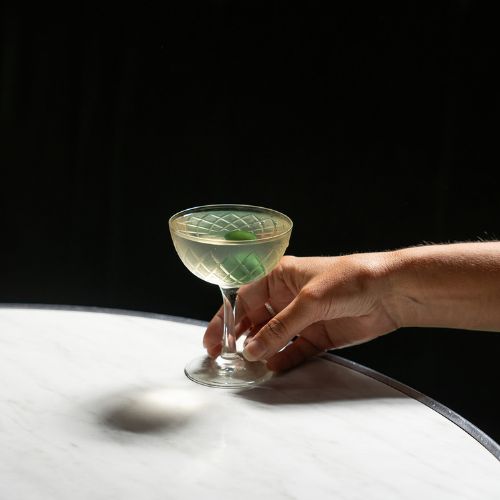A question that comes up quite frequently at gin tastings: what was the Gin Craze all about and why did they call gin 'Mother's Ruin'?
To answer that question we have to travel back into the 18th century, a pretty important period in gin history, the time of the infamous 'Gin Craze'. That's when London saw an unprecedented surge in the production and consumption of gin.
Why? There were a few economic factors at play. Here we go:
- Grain Surplus: The 18th century saw a surplus of grain production in England, particularly wheat. This led to lower prices for grains, making them more accessible and affordable. The surplus grains became an abundant resource for distillers, who could produce gin at a relatively low cost.
- Government Policies: The British government implemented policies that encouraged the production and consumption of gin. One such policy was the Gin Act of 1736, which reduced taxes and licensing requirements for gin production. This led to a proliferation of small-scale gin distilleries, making gin more readily available and affordable for the lower classes.
- Urbanisation and Industrialisation: The 18th century witnessed rapid urbanisation and the growth of industrial cities in England. As people moved from rural areas to cities in search of employment, living conditions often deteriorated. The crowded and unsanitary living conditions in urban areas, coupled with inadequate water sanitation, contributed to a preference for alcoholic beverages like gin over potentially contaminated water sources.
- Cheap Alcohol Alternative: Compared to other spirits like brandy and rum, gin production was relatively inexpensive. This affordability made gin an attractive option across all social classes. The relatively low cost of gin allowed it to become a staple drink among the lower-income population.
- Marketing and Availability: Gin's popularity was also influenced by effective marketing strategies and its widespread availability. Gin was often marketed as a cure-all elixir, with advertisements highlighting its medicinal properties. Additionally, gin was readily available in public houses, gin shops, and street vendors, making it easily accessible to the general population.
These economic conditions created an environment where gin became a popular and affordable beverage of choice in 18th-century England, particularly among the lower classes.
However, as was to be expected, this surge in popularity was accompanied by a host of societal issues linked to the excessive consumption of gin: heightened levels of public drunkenness, a surge in criminal activities, an increase in poverty rates, and the neglect of familial responsibilities
The moniker "Mother's Ruin" emerged as a sociocultural manifestation of the concerns surrounding gin's impact on families and motherhood. It alluded to the perception that gin lured mothers away from their maternal duties, engendering neglect and moral decay within households. It served as a moralistic label, denoting gin as a corrosive influence that undermined family units.
Though it has to be said, during the 18th century Gin Craze, gin production was quite different from the modern methods used today.
- Base Ingredients: The base ingredients for gin production in the 18th century were typically grain, such as barley, corn, or wheat. The grain was milled and mixed with hot water to convert starches into fermentable sugars.
- Mashing and Fermentation: The mashed grains were transferred to a fermentation vessel, where yeast was added to initiate fermentation. This process converted the sugars into alcohol, producing a beer-like liquid. Fermentation took several days to complete.
- Distillation: The fermented liquid, known as the "wash," was then distilled. Traditional pot stills were commonly used during this period. The wash was heated in the still, and as the alcohol vaporised, it passed through the still's neck and condensed into liquid form in the condenser. This process allowed for the separation of alcohol from impurities.
- Botanicals and Flavouring: After distillation, the resulting spirit was often re-distilled with various botanicals to add flavour. These botanicals typically included juniper berries, coriander seeds, angelica root, citrus peels, and other herbs and spices. The distilled spirit was then infused with these botanicals to extract their flavours and aromas.
- Dilution and Ageing: Once the gin had been flavoured, it was often diluted with water to achieve the desired alcohol strength. Ageing of gin was less common during this period, as it was often consumed relatively soon after production.
In comparison, modern gin production has evolved significantly. While some craft distilleries may still utilise traditional methods, large-scale production has adopted more efficient and standardised techniques. Some key differences between 18th-century gin production and today include:
- Equipment: Modern gin production employs advanced distillation equipment, including column stills or continuous stills, which allow for more precise control over the distillation process.
- Purification: Distillation techniques have improved, leading to better purification and separation of impurities from alcohol. This results in a cleaner and more refined spirit.
- Botanicals: The range of botanicals used in gin production has expanded significantly. Today, distillers experiment with a wide variety of herbs, spices, fruits, and other flavouring agents to create unique flavour profiles.
- Quality Control: Modern gin production emphasises quality control measures to ensure consistency in taste and character. Distilleries may employ rigorous testing and monitoring procedures to maintain product standards.
- Ageing and Maturation: Some gins today undergo ageing and maturation in oak barrels, similar to whiskey production. This process allows the gin to develop additional flavours and complexity over time.
In short, today's gin production is highly regulated, ensuring higher standards of quality, safety, and responsible consumption.
Sources:
"Gin: A Global History" by Lesley Jacobs Solmonson),
"Gin Craze and the Georgian City" by Jessica Warner).
"The Social History of Gin" by Mark Forsyth).


















